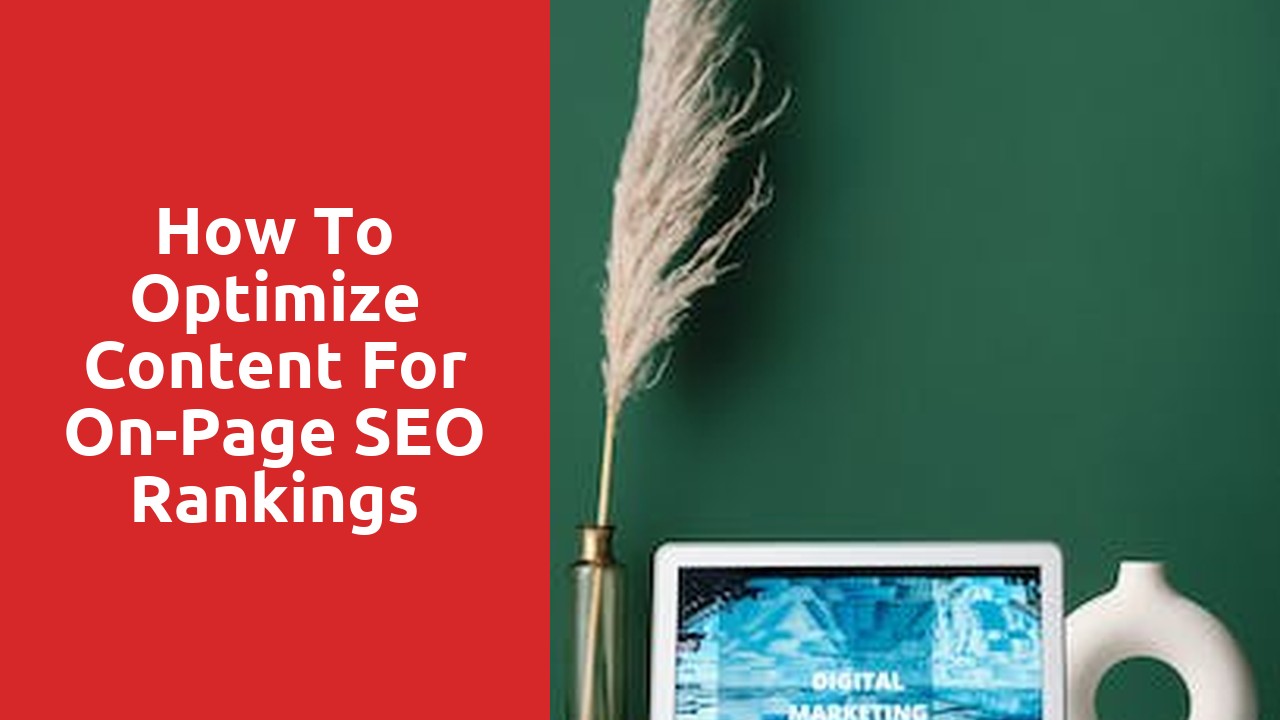Understanding On-Page SEO: A Guide to Boost Your Rankings
When it comes to boosting your website’s rankings on search engine result pages (SERPs), understanding on-page SEO is crucial. On-page SEO refers to the optimization techniques applied directly on your website to improve its visibility and relevancy. By focusing on certain elements like keywords, meta tags, and content structure, you can enhance your website’s chances of ranking higher in organic search results.
One important aspect of on-page SEO is keyword research. Conducting thorough keyword research helps you identify the search terms and phrases that your target audience is using to find products or services similar to yours. By incorporating these keywords strategically into your website’s content, title tags, headings, and meta descriptions, you can significantly improve your website’s relevance to search engine algorithms, making it more likely to be displayed prominently in search results.
Additionally, optimizing your website’s structure and navigation is another key on-page SEO strategy. A well-organized and easily navigable website not only enhances the user experience but also makes it easier for search engines to crawl and index your webpages. Utilizing clear headings, a logical site structure, and internal linking can ensure that search engine bots understand the content on your website and can index it correctly, contributing to higher search rankings.
Overall, on-page SEO plays a pivotal role in boosting your website’s rankings. By implementing effective keyword research and optimizing your website’s structure, you can make significant improvements in your website’s visibility and attract more organic traffic from search engines. Stay tuned for the upcoming sections of this guide, where we will delve deeper into these strategies and provide you with comprehensive insights to supercharge your on-page SEO efforts.
Keyword Research: Uncovering the Right Terms for Optimization
When it comes to optimizing your website for search engines, keyword research plays a critical role. By uncovering the right terms and phrases that your target audience is using to search for your products or services, you can improve your website’s visibility and drive organic traffic.
Effective keyword research involves more than simply brainstorming a list of potential keywords. It requires understanding your audience, analyzing search trends, and identifying high-value keywords with low competition. By using tools like Google Keyword Planner, SEMrush, or Ahrefs, you can gather valuable insights on search volume, competition, and keyword variations. This data will guide your content creation, ensuring that you are targeting the right keywords and optimizing your website for maximum visibility.
Crafting Compelling Meta Titles and Descriptions for Maximum Impact
When it comes to crafting compelling meta titles and descriptions, there are a few key factors to keep in mind. Firstly, it’s essential to understand the importance of these elements in driving traffic to your website. Meta titles and descriptions are the first things that potential visitors see in search engine results, so they need to be concise, enticing, and relevant.
To create an impactful meta title, focus on incorporating relevant keywords that accurately describe the content of the page. Aim for a length of around 50-60 characters to ensure that it appears fully in search engine results. Additionally, consider adding a unique selling proposition or a call to action to entice users to click through.
Similarly, when crafting a meta description, it’s crucial to grab the attention of users by summarizing the content in a concise and engaging manner. Aim for a length of around 160 characters, keeping in mind that anything longer may get cut off in search results. Utilize persuasive language to highlight the value of your content and encourage users to visit your website.
By following these guidelines and fine-tuning your meta titles and descriptions, you can improve the visibility and click-through rates of your web pages, ultimately driving more organic traffic and potential customers to your site.
Structuring Your Content: The Power of Headings and Subheadings
While writing content, it is crucial to understand the power of headings and subheadings. These elements play a significant role in structuring your content and enhancing its readability. Headings serve as signposts that guide readers through your text, enabling them to quickly grasp the main points and overall flow of your ideas.
When crafting headings, it is important to consider their hierarchy and use them systematically. By using different heading levels, you create a visual structure that helps readers navigate through your content. Subheadings, on the other hand, provide additional context and further break down the main ideas within each section. This allows for an organized and logical presentation of information, making your content more accessible and engaging for your audience. Headings and subheadings also aid in SEO, as search engines use these elements to understand the relevance and structure of your content. By utilizing headings and subheadings effectively, you elevate the overall quality of your content and elevate your writing to a professional level.
Incorporating Keywords Naturally: Writing Engaging and SEO-Friendly Content
When it comes to creating engaging and SEO-friendly content, incorporating keywords naturally is a crucial aspect. Keywords play a significant role in attracting search engines and driving organic traffic to your website. However, finding the right balance between integrating keywords seamlessly and creating compelling content for your readers can be a challenge.
The key to successfully incorporating keywords into your content is to ensure that they flow naturally within the context of your writing. Instead of forcefully inserting keywords into every sentence, focus on choosing relevant keywords that align with your content’s topic and intent. Strategic keyword placement in the title, headings, and meta tags can greatly improve your content’s visibility to search engines. Additionally, using variations of keywords and long-tail keywords can enhance the relevance and depth of your content, attracting a wider audience.
Leveraging Internal Linking: Guiding Users and Search Engines through Your Site
Internal linking is a vital strategy for improving the user experience and search engine visibility on your website. By strategically placing links within your content, you can guide users to relevant pages and keep them engaged for longer periods. This not only enhances the user experience by making navigation easier, but it also helps search engines understand the structure and hierarchy of your site.
When crafting internal links, it is essential to use descriptive anchor text that accurately reflects the content of the linked page. Avoid generic phrases like “click here” or “learn more,” as they provide little context for both users and search engines. Instead, incorporate relevant keywords into your anchor text to provide a clear and concise description of the linked page’s content. This not only helps users decide whether to click on the link but also gives search engines valuable information about the linked page’s relevance to a particular topic.














